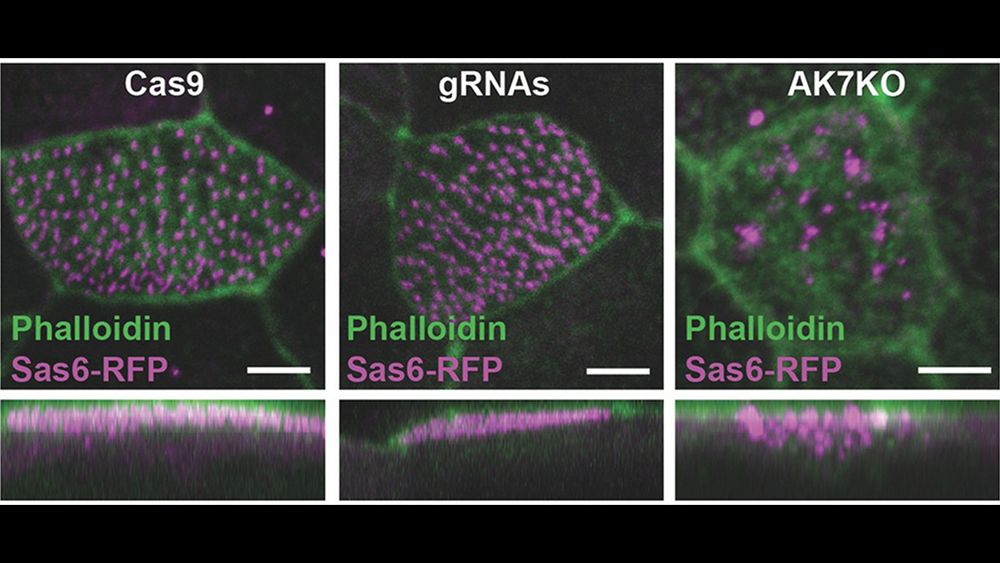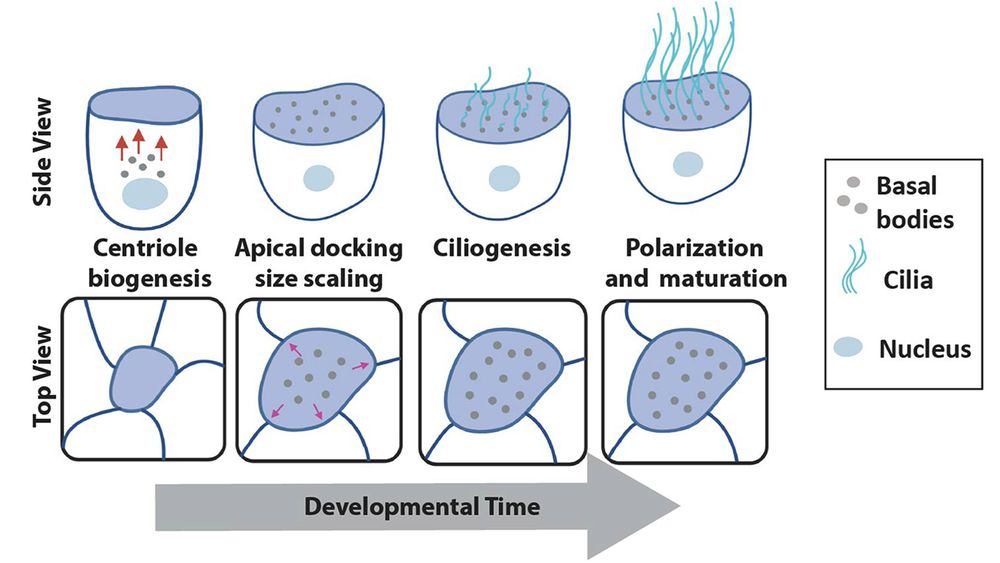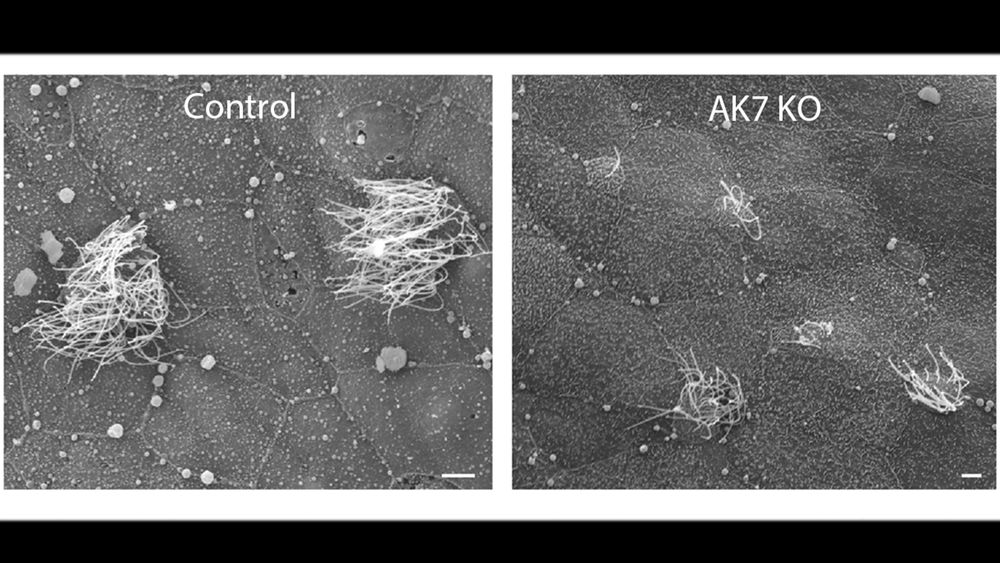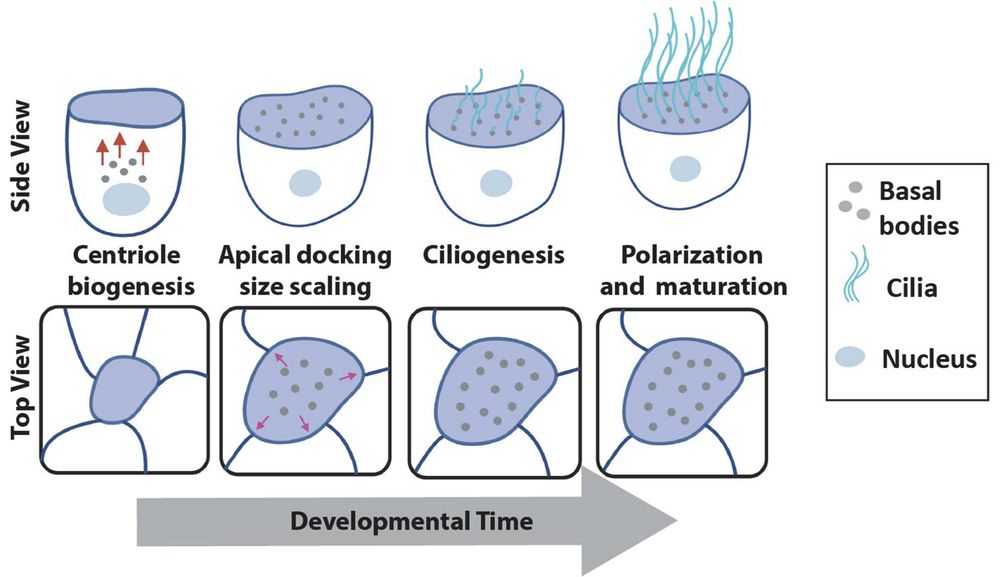
📍Pasteur Institute

Cilia are anchored to the apical surface of MCCs via 150-200 centrioles, also known as basal bodies. These structures are generated close to the nucleus and then migrate apically, where they dock at the cell surface and subsequently give rise to cilia.

Cilia are anchored to the apical surface of MCCs via 150-200 centrioles, also known as basal bodies. These structures are generated close to the nucleus and then migrate apically, where they dock at the cell surface and subsequently give rise to cilia.

We propose that the centriolar defects underlie much of the reduction in cilia number, contributing to the loss of mucociliary flow in AK7-depleted tissues, indicative of PCD.
We propose that the centriolar defects underlie much of the reduction in cilia number, contributing to the loss of mucociliary flow in AK7-depleted tissues, indicative of PCD.

Cilia are anchored to the apical surface of MCCs via 150-200 centrioles, also known as basal bodies. These structures are generated close to the nucleus and then migrate apically, where they dock at the cell surface and subsequently give rise to cilia.

Cilia are anchored to the apical surface of MCCs via 150-200 centrioles, also known as basal bodies. These structures are generated close to the nucleus and then migrate apically, where they dock at the cell surface and subsequently give rise to cilia.

…I might be biased, but how fascinating is it to see how much there is still to discover?🤩
…I might be biased, but how fascinating is it to see how much there is still to discover?🤩

